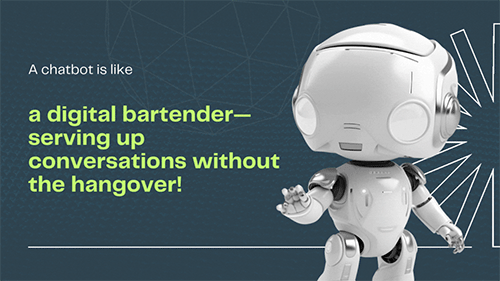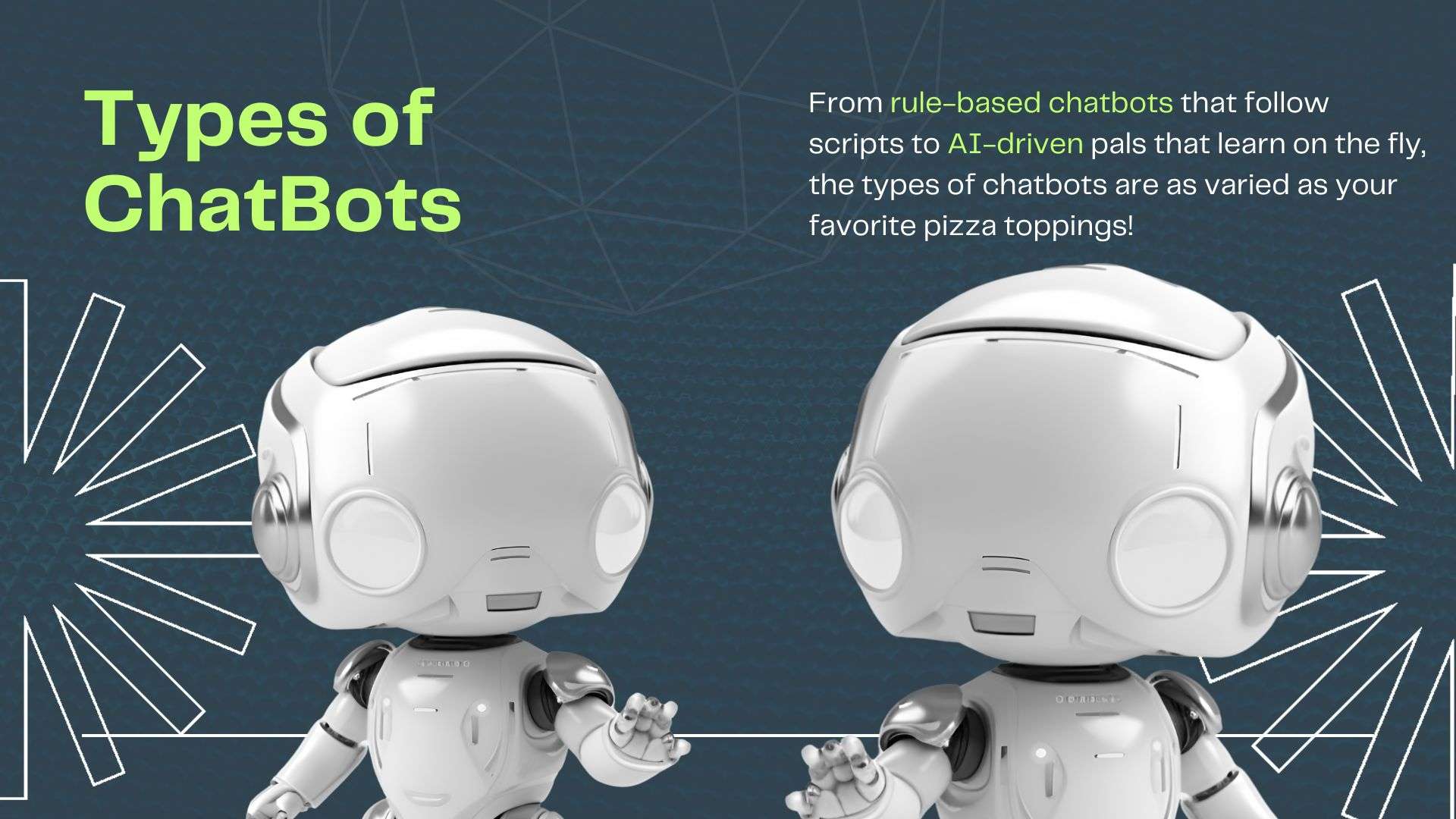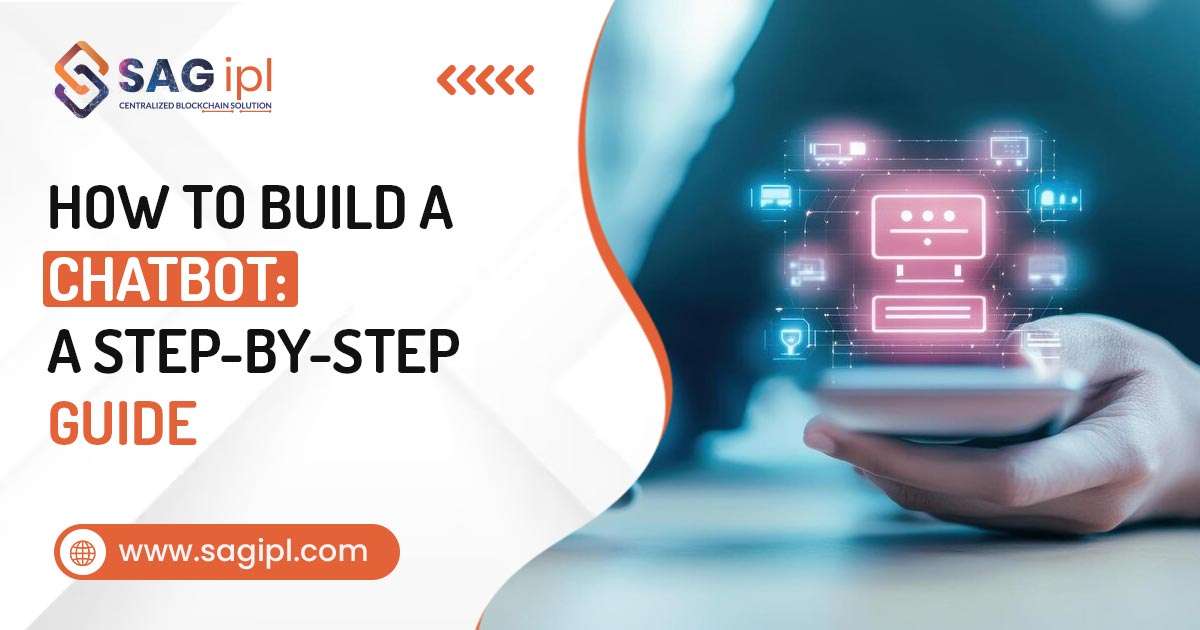Chatbots have become a crucial part of modern businesses aiming to simplify customer or visitor interactions. By keeping conversations as natural as possible—whether through text or voice—chatbots enhance the user experience with intelligent responses. If you’re wondering how to build a chatbot for your business or platform, you’re in the right place, as this guide will walk you through the process.
What Exactly Is a Chatbot?💬

A chatbot is a software program developed to make natural human-like conversations. These bots use technologies like Natural Language Processing (NLP), Machine Learning (ML), and Artificial Intelligence (AI) to engage with users through text or voice. They are capable of improving their intelligence by learning from previous conversations.
Chatbots can be often found on diverse applications like live chat support on platforms and websites that are widely used. They analyze user queries efficiently and offer a smooth customer service experience or a solution provider.
How Chatbots Work: The Role of NLP, ML, and AI in Intelligent Conversations💡

Technologies like Natural Language Processing (NLP) Machine Learning (ML) and Artificial Intelligence (AI) technologies are responsible for chatbots. When a chatbot receives a query, intricate algorithms analyze the input, understand its intent, and come up with appropriate responses.
The potential of a chatbot depends on its capacity to understand the language, be it text or voice. Some chatbots are built smartly and you barely notice any difference between human and machine interaction, but still navigating complex dialogues remains a significant challenge.
Here’s a breakdown of a chatbot’s functioning:
- Users input queries to the chatbot via text or speech.
- NLP processes and analyzes the input, extracting essential keywords and information.
- The chatbot prepares a response matching the user’s query, drawing from pre-programmed responses or using ML models trained on past interactions.
- Through this process, the chatbot dynamically involves users, establishing engaging conversations.
You have encountered here with a few new terms, Natural Language Processing (NLP), Machine Learning (ML), and Artificial Intelligence (AI). These are the powerful technologies on which chatbot development relies or functions. Let’s understand them what they are:
> Natural Language Processing (NLP)
NLP is a technology that enables chatbots to understand and respond to human language, whether spoken or written. It combines rules of language with computer algorithms to analyze what people say or type. Key functions of NLP include:
Breaking down text: The chatbot splits sentences into smaller parts, called tokens, to make them easier to analyze.
Identifying important details: It recognizes specific entities in the text, like names or locations, which helps it understand the context better.
Understanding emotions: NLP can assess the sentiment behind a message, determining if it’s positive, negative, or neutral.
> Machine Learning (ML)
ML is a branch of AI that enables chatbots to learn from past interactions. Instead of following strict scripts, ML allows chatbots to adapt and improve over time based on the conversations they have. This means:
Learning from experience: Chatbots become smarter by analyzing previous chats, which helps them respond more accurately in future interactions.
Handling complex queries: With ML, chatbots can understand and answer more complicated questions beyond simple yes or no responses.
> Artificial Intelligence (AI)
AI is the broader field that includes both NLP and ML. It allows chatbots to simulate human conversation realistically. AI-powered chatbots can:
Engage in dynamic conversations: They can adjust their responses based on what users say, and make interactions feel more personal.
Provide personalized experiences: By remembering past interactions, AI chatbots can tailor their responses to individual users.
These technologies work together to create chatbots that are not only functional but also capable of having meaningful and engaging conversations with people.
The Many Faces of Chatbots: Types and Uses Across Industries🌐

The internet is loaded with different chatbots, having a myriad of applications. They help enterprises to fulfil specific objectives. Each category possesses distinct features and utilities, tailored to meet the unique demands of various industries. Let’s explore the chatbot types commonly found across different platforms in various industries.
Chatbot Types Based on Technology
> Rule-Based Chatbots
These chatbots work on preset rules and conditional logic to generate quick responses. They excel in scheduling appointments, addressing FAQs, and swiftly fishing out information. Their structured approach makes them well-suited for handling routine interactions with precision.
> AI-Based Chatbots
These bots use the potential of AI and Machine Learning. AI-backed chatbots are trained to process natural language and engage users in dynamic conversations. Trained in AI algorithms, they adeptly understand the user intent and deliver personalized assistance. Industries such as healthcare, e-commerce, and finance benefit from their intelligence in managing intricate conversations.
By 2027, the chatbot market is expected to reach $3.99 billion, highlighting its rapid growth in customer service.
Chatbot Types Based on Their Uses
1. Virtual Assistants
Siri, Alexa, and Google Assistant are some of the prominent chatbots in the market today that aid users in tasks ranging from answering queries to even managing smart home devices. They are integrated across devices like smartphones and smart speakers, and they intelligently function in such environments.
2. Transactional Chatbots
Transactional chatbots are prominently used in finance and banking domains. It requires them to be highly efficient as the concern is finances. These chatbots smoothen fund transfer processing, balance inquiries, and secure payments, they are trained to keep data security and account management minimal.
3. Social Media Chatbots
Some chatbots are built for social media apps to make customers’ shopping experience hassle-free. They can also offer content suggestions. Their live conversation capabilities build customer relationships and make their navigation through the page satisfactory.
4. Informational Chatbots
These chatbots are built for knowledge-sharing purpose and are trained with extensive information input. Users can ask for factual insights and in-depth explanations for different subjects. They are mostly used in educational institutions, news outlets, and content platforms.
5. Entertainment Chatbots
They are mostly found on social media platforms and gaming applications. These chatbots improve user engagement and can be used in marketing initiatives for a more enticing user experience.
7. Customer Assistance Chatbots
The most commonly and widely used chatbots for resolving an extensive range of queries, product information, and issues. Their round-the-clock availability mark as a significant role in business operations.
8. IoT (Internet of Things) Chatbots
These chatbots set connections between users and IoT devices. Remote monitoring and control functionalities are its prime features. They are tailored for smart home environments to manage temperature settings, lighting controls, and appliance operations, aligning with the burgeoning trend of smart home technology.
9. Hybrid Chatbots
Blending AI capabilities with rule-based functionalities, hybrid chatbots offer a versatile solution. They efficiently transition between rule-based responses for simple queries and AI-powered modes for complex interactions, preparing a responsive and fitting reply at all times.
How Chatbots Improve E-Commerce, Healthcare, Finance & More
Chatbots are designed to simplify our lives and make the flow of interactions smooth with businesses. They are being used in various industries, playing a pivotal role in effective customer relationship management. Let’s delve into the applications of chatbots within different sectors:
> E-Commerce
In the realm of e-commerce, a responsive support system is paramount for swiftly addressing customer inquiries. For e-commerce setups, integrating chatbot technology creates a dedicated space where customers feel connected, receiving tailored assistance for product queries, personalized recommendations, and seamless transaction facilitation.
> Education
For educators and ed-tech ventures, embedding chatbots within online learning platforms is essential. AI-powered chatbots can revolutionize the learning experience by offering personalized support, automating administrative tasks, providing round-the-clock student guidance, and enhancing engagement through interactive learning modules.
> Healthcare
Within the healthcare domain, AI-driven chatbots can offer patients medical guidance, aid in appointment scheduling, and assist healthcare providers with administrative duties. Using chatbots in healthcare operations enables professionals to focus on critical tasks while ensuring prompt and accurate responses to patient queries.
> Finance
As online banking transactions surge, personalized chatbots play a crucial role in assisting customers with financial inquiries. Fintech businesses benefit from dedicated chatbots equipped to provide financial advice, insights on interest rates, investment recommendations, savings options, and other relevant information, improving customer service and engagement.
> CRM Platforms
Chatbots in CRM platforms make routine tasks handy, allowing users or collaborators to concentrate on essential operations. For sales teams, chatbots aid in automating data entry processes, freeing up time for meaningful customer interactions. Studies indicate that a significant portion of sales efforts are consumed by CRM data entry, a burden alleviated by efficient chatbot integration.
> Project Management
Efficient project management is integral to project success, and introducing automation through chatbots can enhance operational efficiency. Tailored chatbots dedicated to project management streamline team collaboration, simplify query resolutions during project milestones, and optimize task management processes. By leveraging chatbots, teams can communicate effectively, schedule meetings, and streamline content promotion efforts, reducing manual workload and setting collaboration efficiency.
From Concept to Deployment: Building a Chatbot💻

Understanding how to construct a chatbot involves a series of inquiries as it commences with delineating the features and operations of your chatbot. Here’s a distinctive guide to crafting an effective chatbot:
Step 1 – Define a Solid Objective Behind Your Virtual Assistant Creation
Initiate by reflecting on why you intend to develop a chatbot in the first instance. What role do you envision it fulfilling for your clientele or prospective customers? These clarifications will steer you in determining the type of chatbot to establish, whether a straightforward one with predefined responses or a sophisticated model capable of learning from user interactions. Presently, prevalent chatbot categories cater to customer support and sales functions.
Step 2 – Select an Appropriate Platform
Choose the platform where your chatbot will reside based on the preferred communication channels of your target audience. Whether on your website, app or across multiple channels, consistency in the chatbot development setup is essential for a seamless user experience.
Step 3 – Opt for the Right Technology
Following platform selection, the next step involves choosing the technology stack suitable for your project or business needs. Consider the expertise of your developers, the availability of Natural Language Processing (NLP) libraries, and compatibility with existing software. Evaluate the technology’s versatility for voice interactions, accessibility, developer popularity, and current industry trends.
Step 4 – Training the Chatbot
For AI-driven chatbots, training is imperative. Through exposure to diverse user queries and responses, the chatbot learns to comprehend and interact effectively. Leveraging existing data sources like emails or support tickets aids in enhancing the chatbot’s conversational capabilities.
Step 5 – Quality Assurance
Just like any software application, comprehensive testing is vital to ensure the chatbot’s efficacy in real-world scenarios. Anticipate user interactions that may challenge the chatbot and refine its responses to maintain a seamless dialogue or seamlessly transition users to human agents when necessary.
Step 6 – Deployment and Maintenance
The chatbot deployment involves connecting all components and merging it with existing systems like CRM or ERP. Post-deployment, continuous monitoring, performance evaluation, and response refinement are essential to uphold user satisfaction. Sustained maintenance guarantees the chatbot operates efficiently and meets evolving customer needs over time.
Tools for Developing Interactive Digital Assistants🛠️
Diverse tools cater to feature-loaded chatbot development requirements, including:
Python:
Renowned for simplicity and robust libraries in natural language processing and machine learning.
spaCy:
An advanced NLP library in Python for swift text processing, tokenization, and entity recognition.
NLTK:
A Python toolkit for human language data processing, crucial for chatbot NLP functions.
TensorFlow:
Google’s ML framework for neural network implementation, is essential for intelligent chatbot development.
PyTorch:
Facebook’s dynamic ML library for chatbot AI models.
Zapier:
An automation platform connecting chatbots with apps for streamlined operations.
Google Analytics:
Tracks website traffic and user interactions to optimize chatbot performance and user experience.
Leveraging these programming and tools empowers developers to build feature-rich chatbots for better user engagement and operational effectiveness.
Why You Should Collaborate with Experts to Build a Chatbot?💼
Learning how to build a chatbot offers control over the outcomes, but it demands significant time investment. Building an in-house team for crafting an automated response system is costly and time-consuming. Opting for a professional AI chatbot development agency such as SAG IPL relieves this burden. Seasoned companies proficient in NLP, AI, and ML technologies can deliver top-notch chatbot solutions to streamline business processes.
Ready for More? Explore Our Other Blog Posts Now!


![10 Top Sites to Hire Web Developers In India [2025 Edition] Top Sites to Hire Web Developers](https://blog.sagipl.com/wp-content/uploads/2023/09/Top-Sites-to-Hire-Web-Developers-300x158.jpg)
![Most Popular eCommerce Platforms for Online Business [Updated May 2025] Most Popular eCommerce Platforms for Online Business [ Updated May 2025]](https://blog.sagipl.com/wp-content/uploads/2023/06/Most-Popular-eCommerce-Platforms-300x158.jpg)



